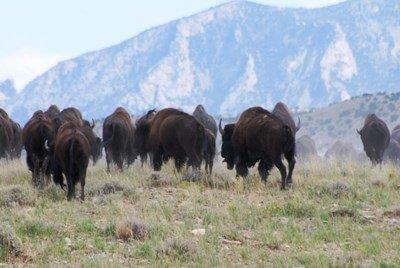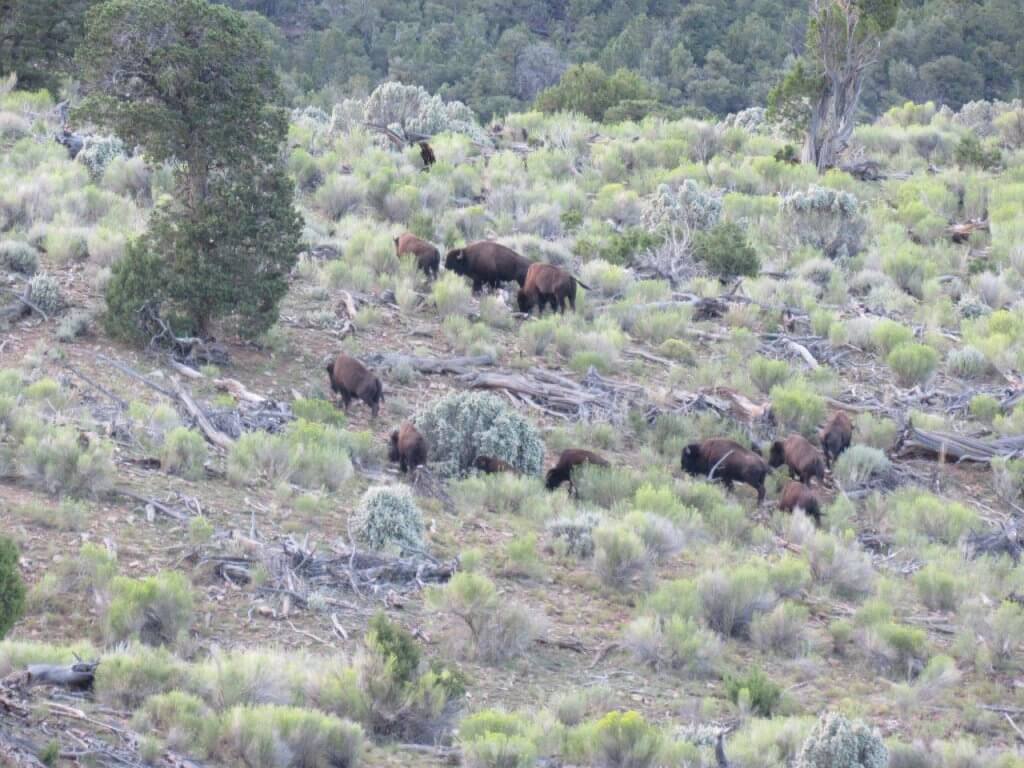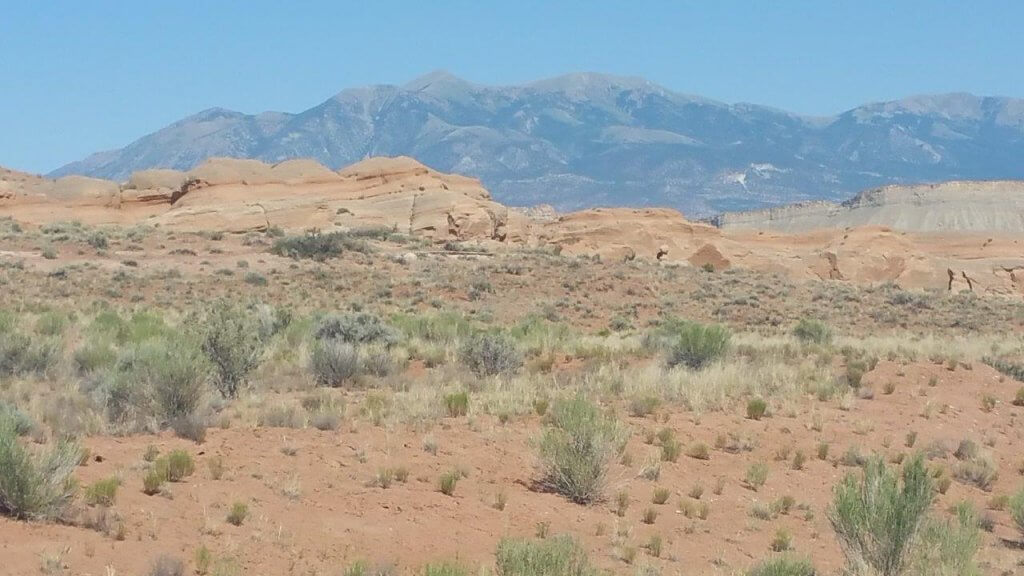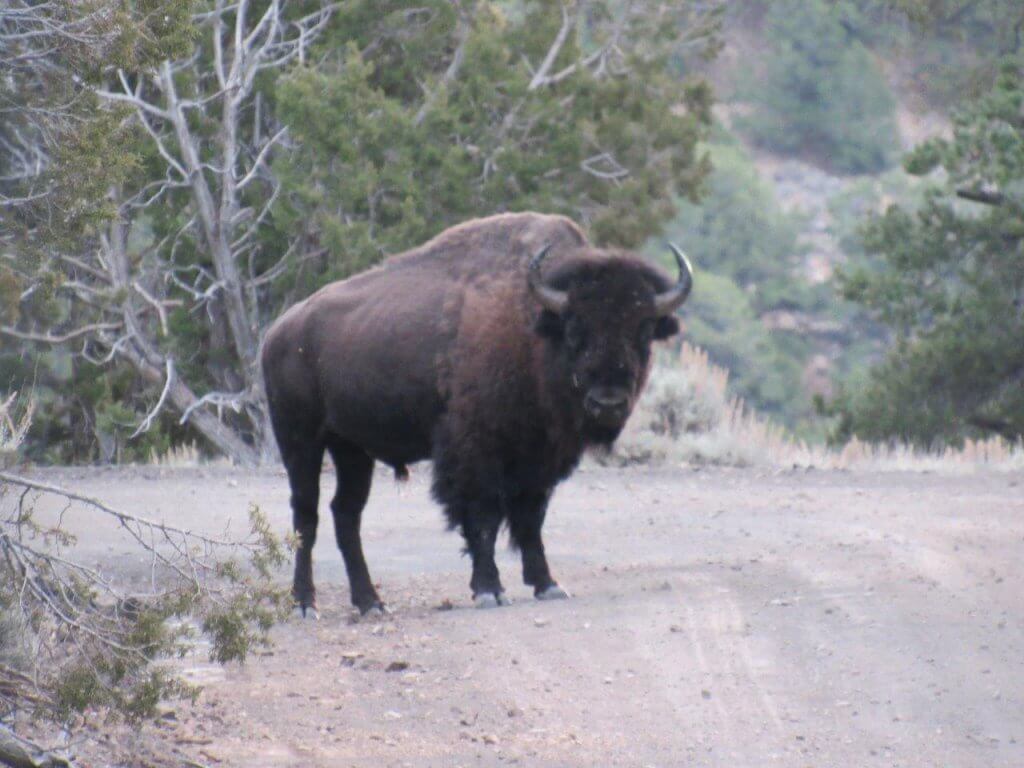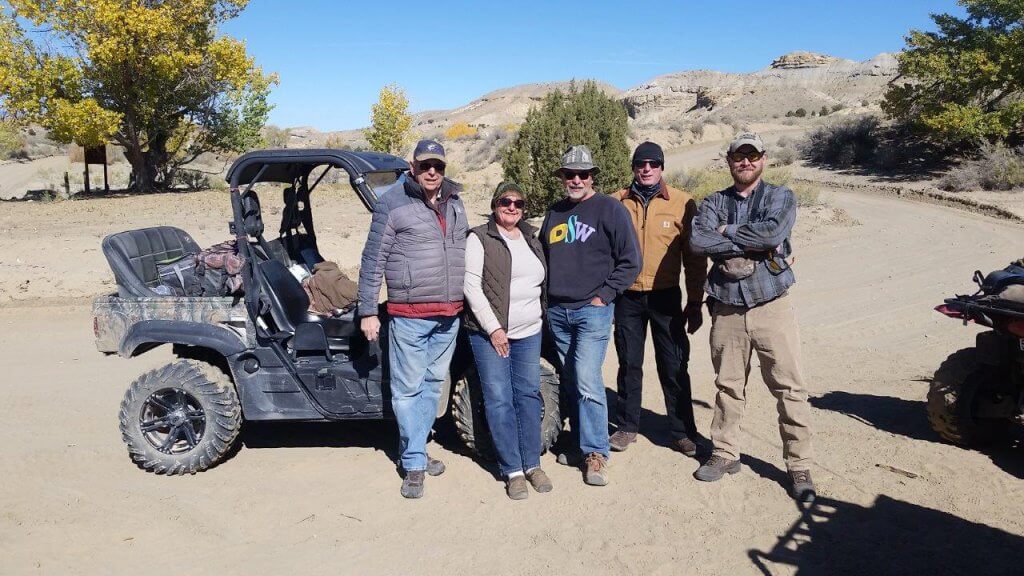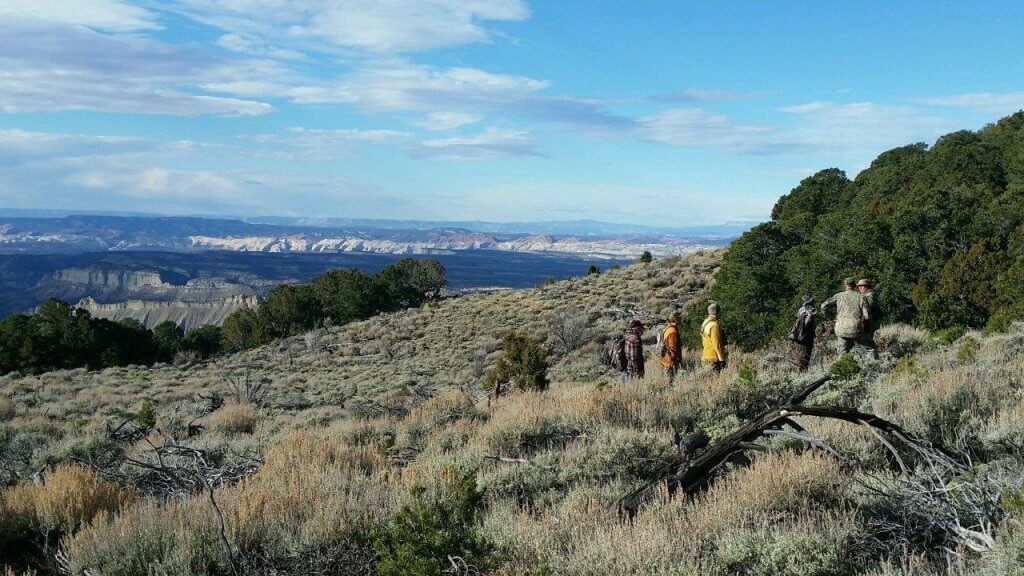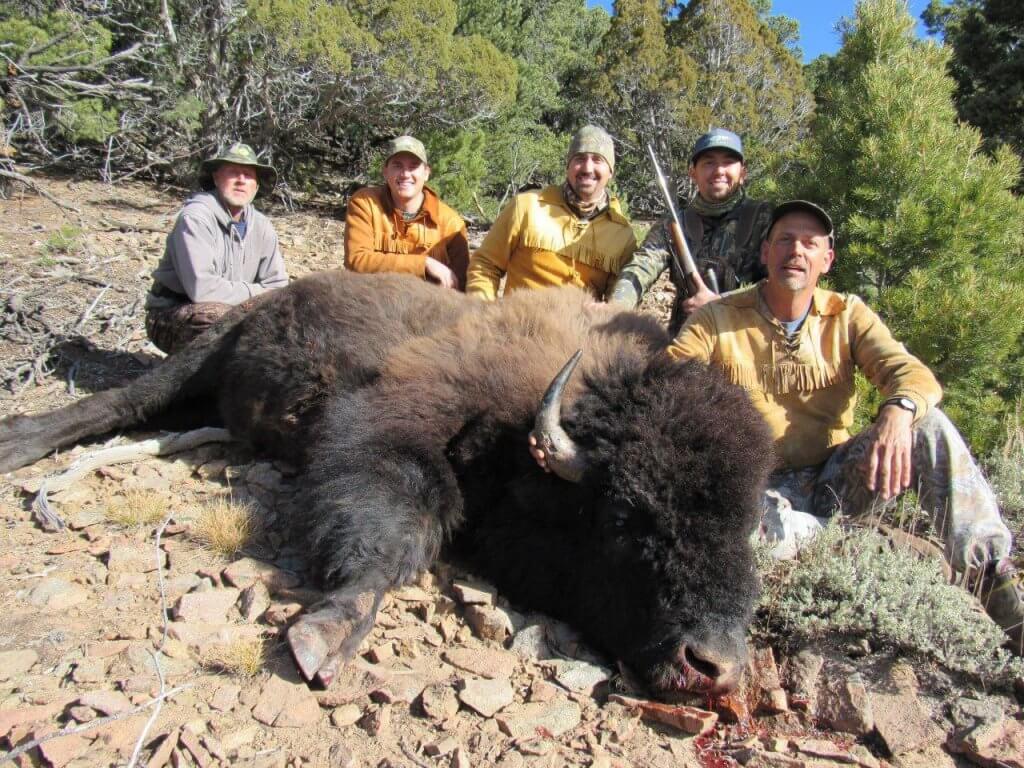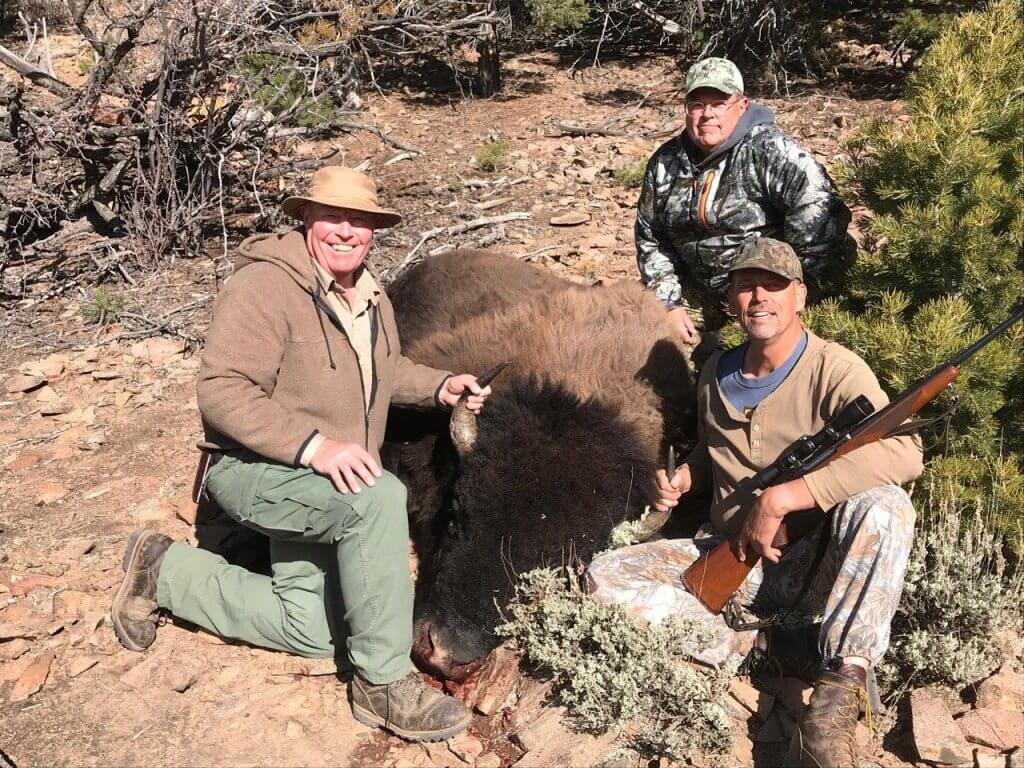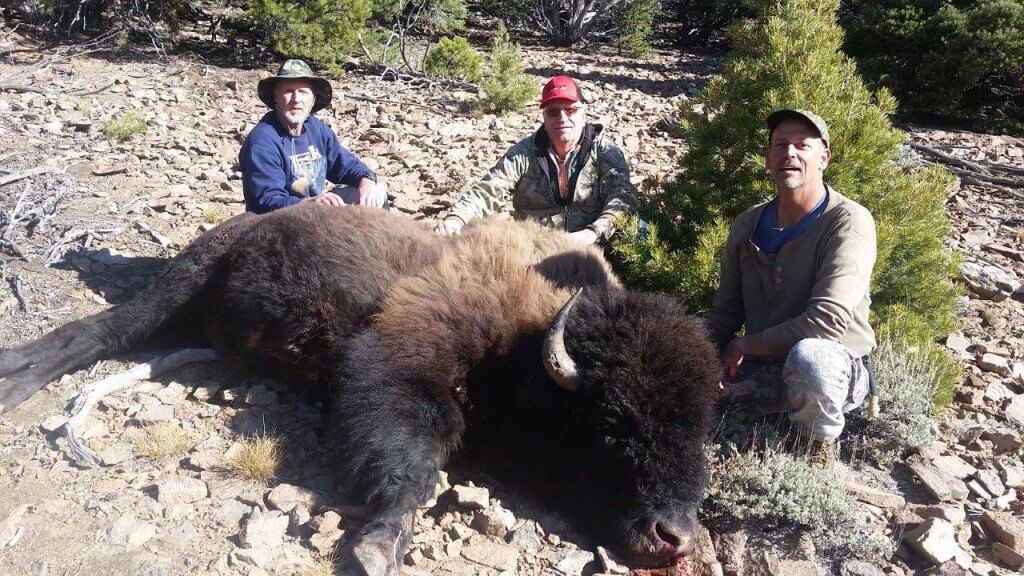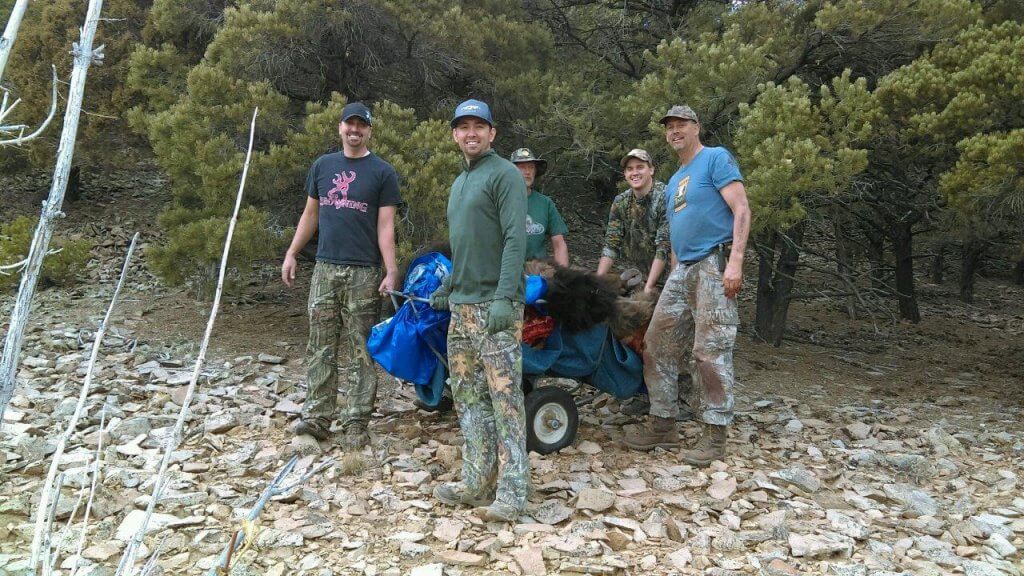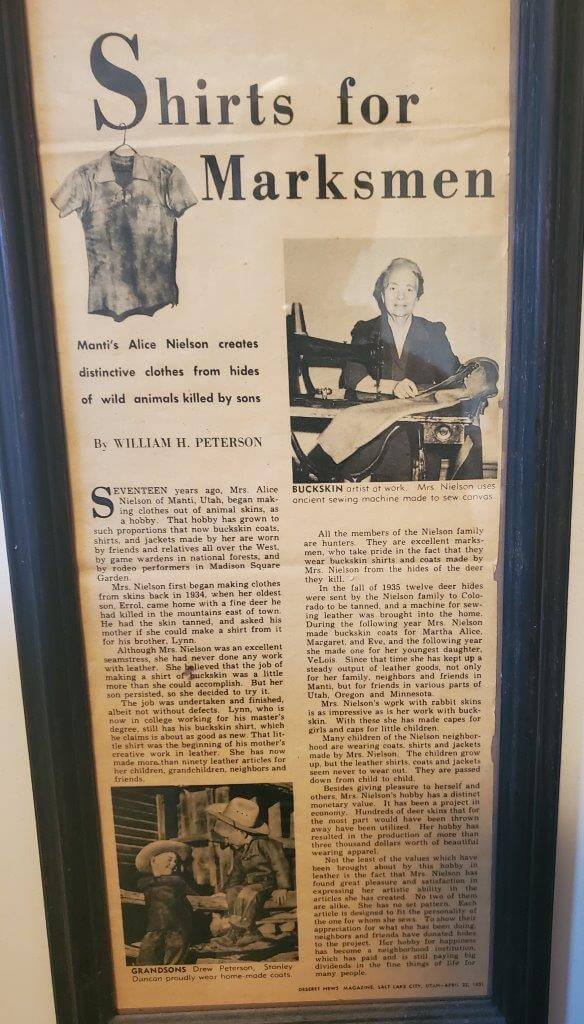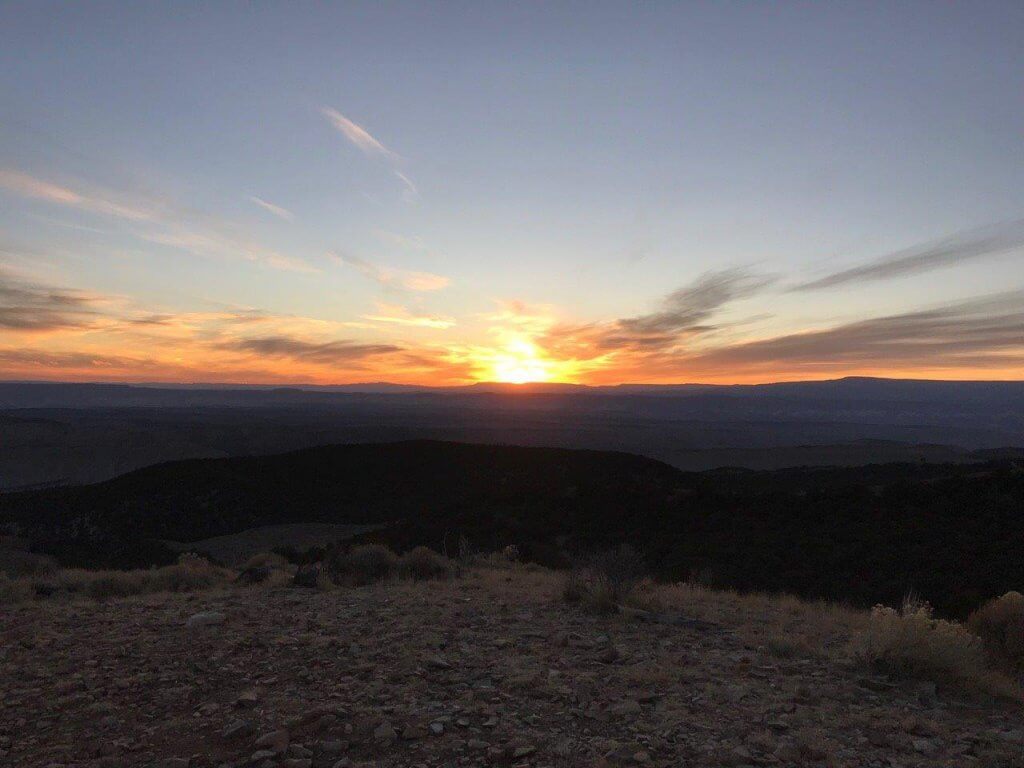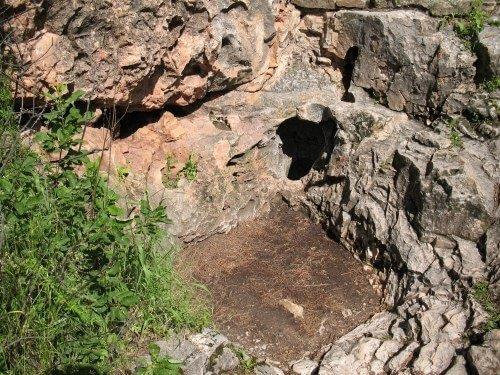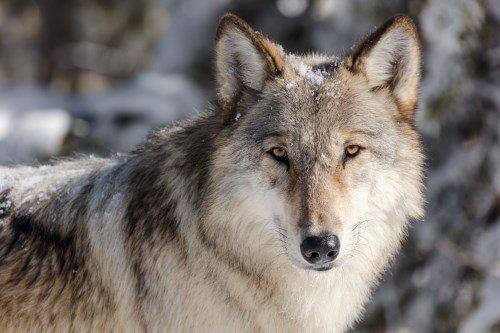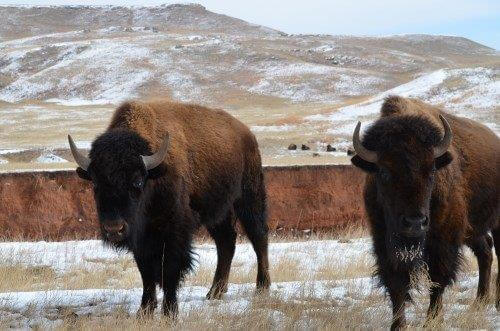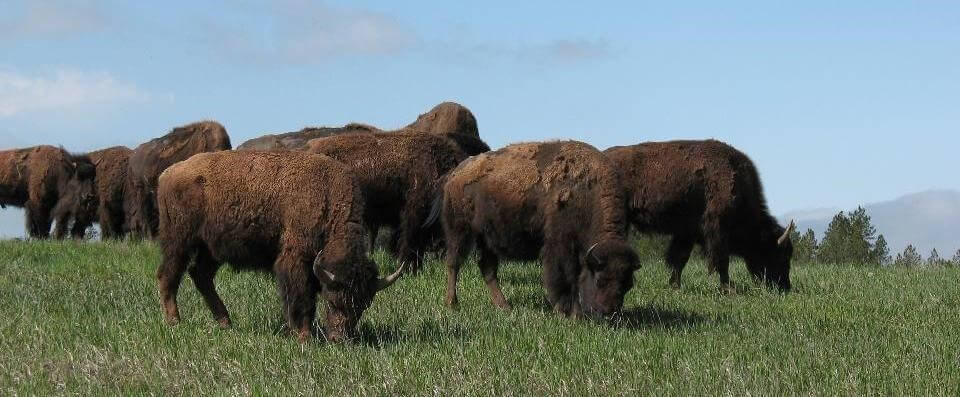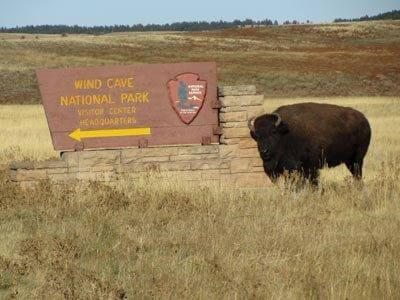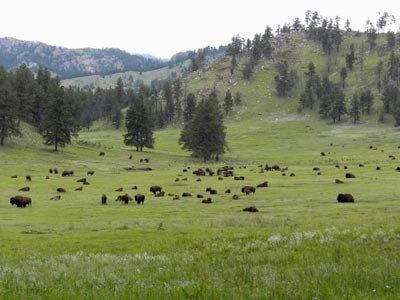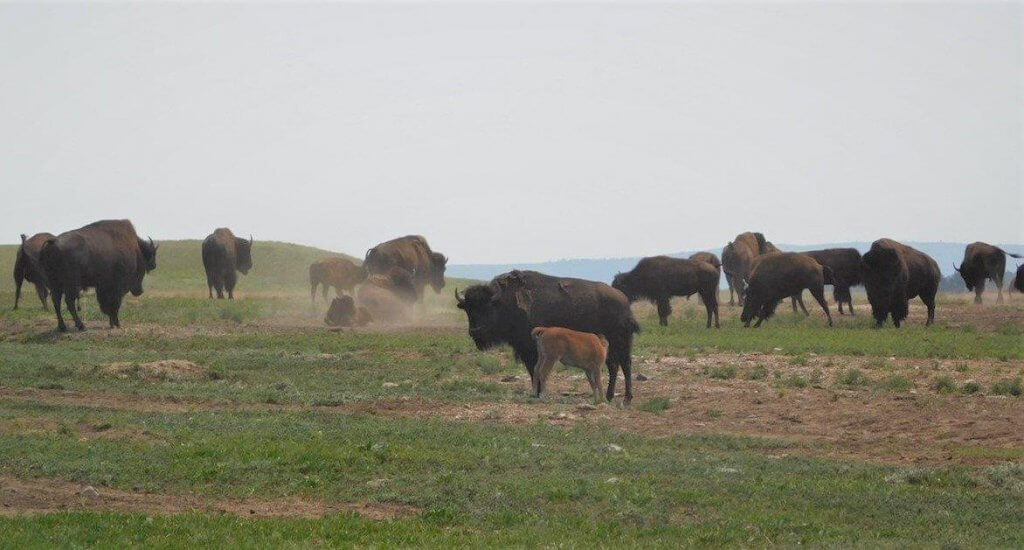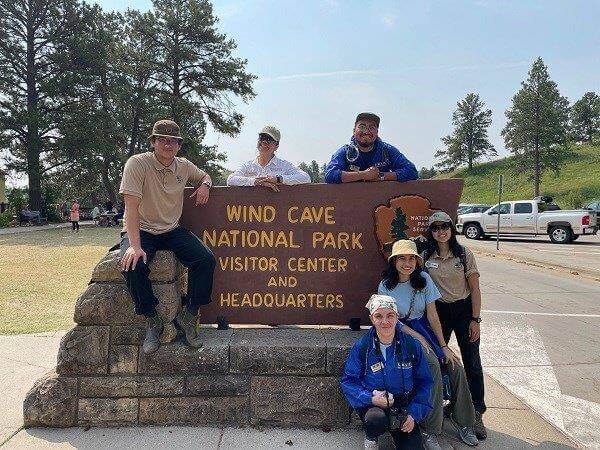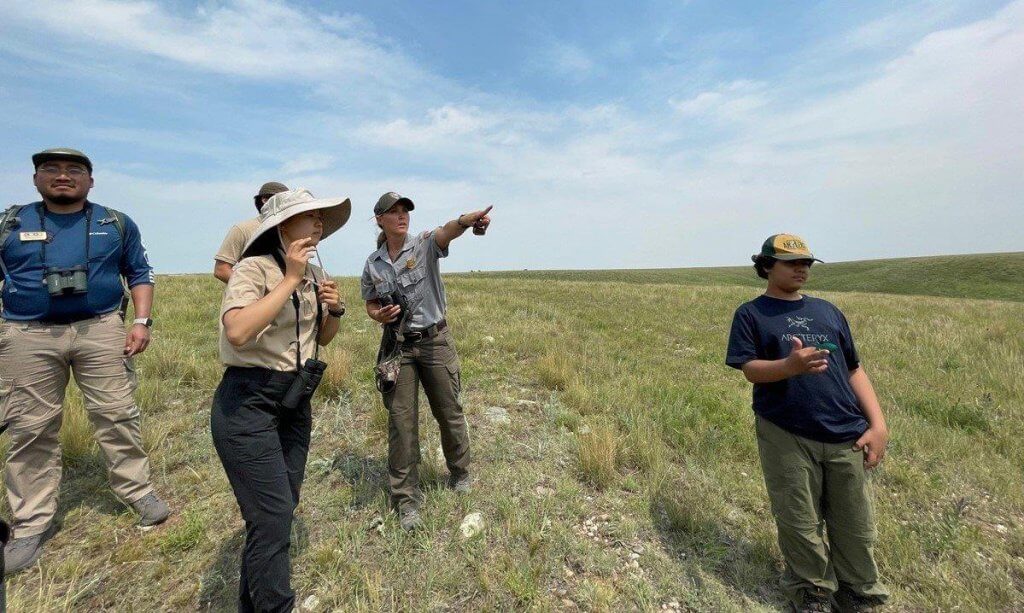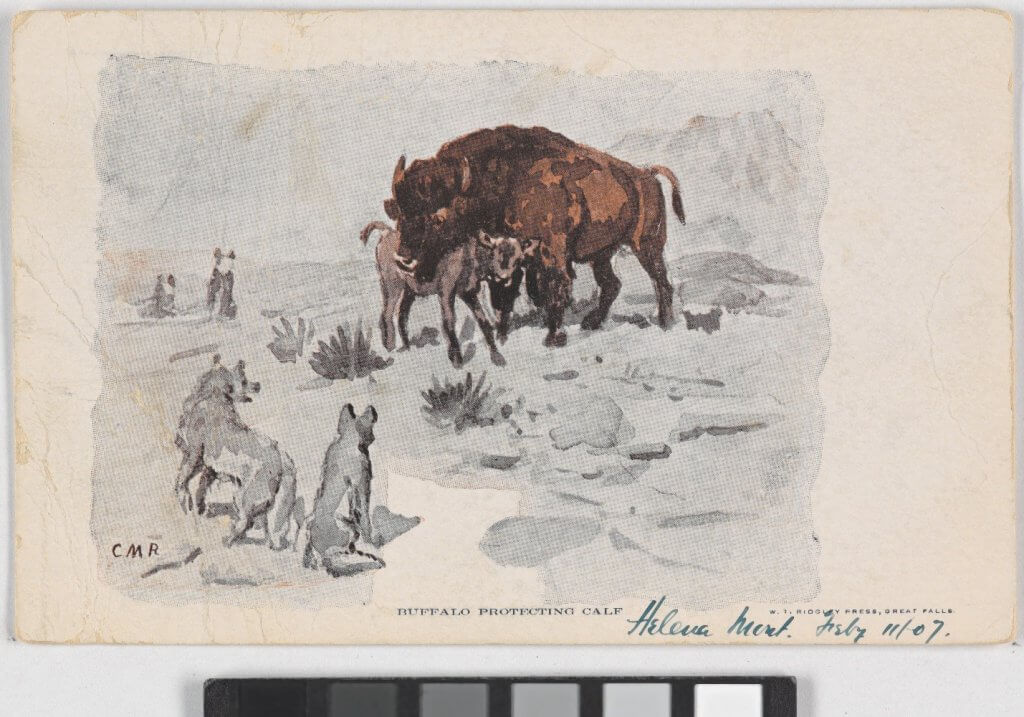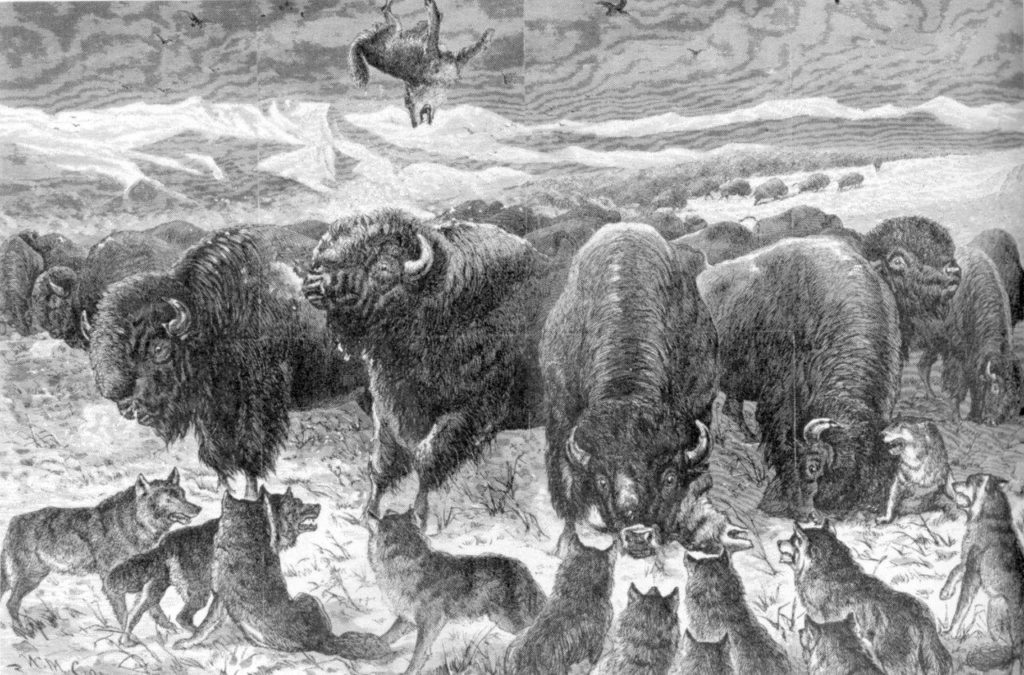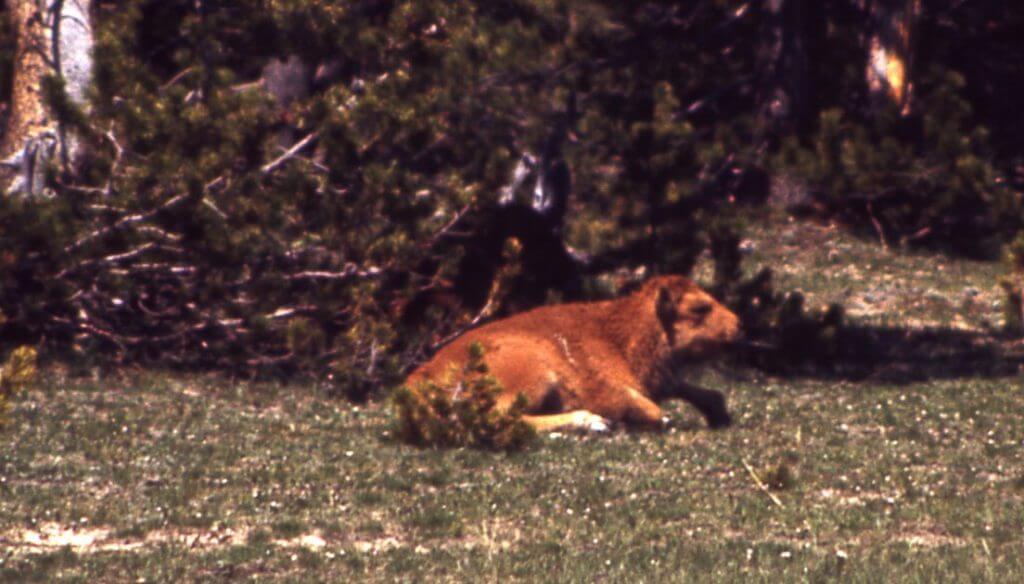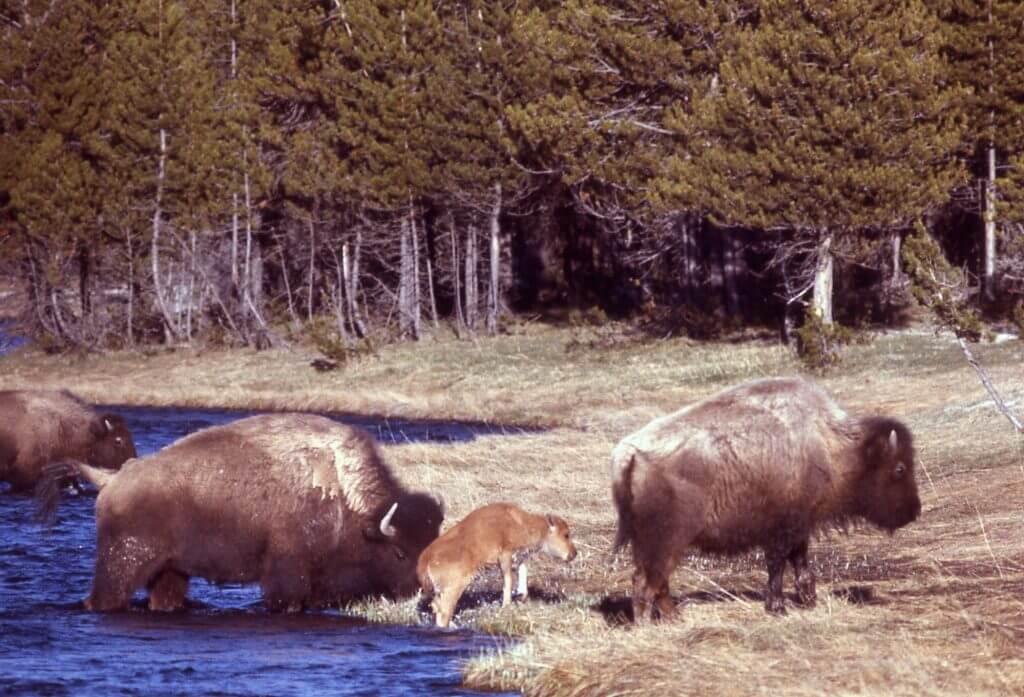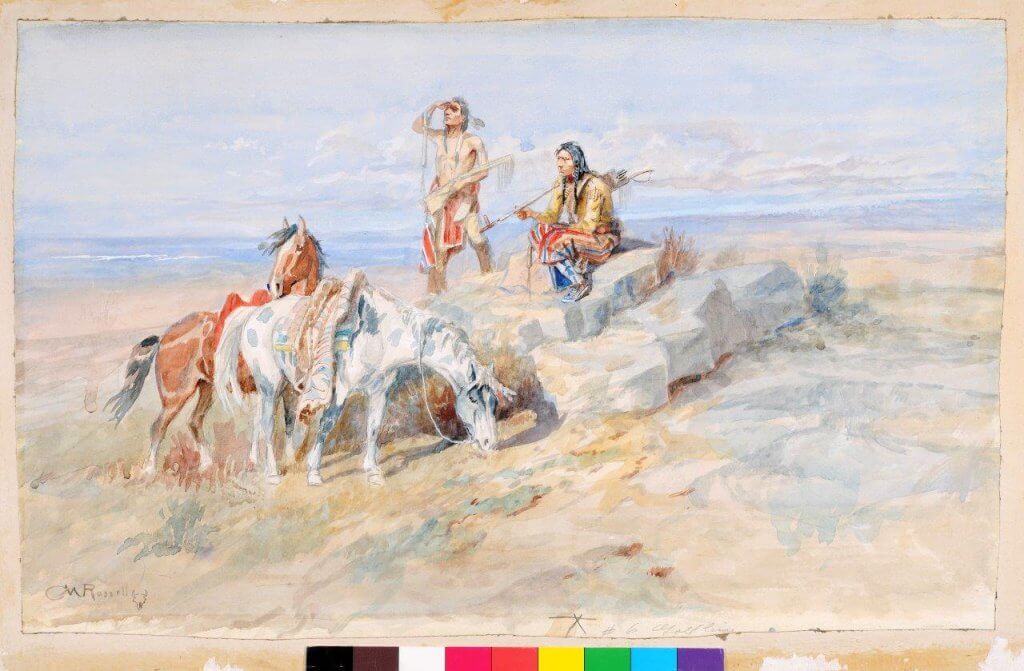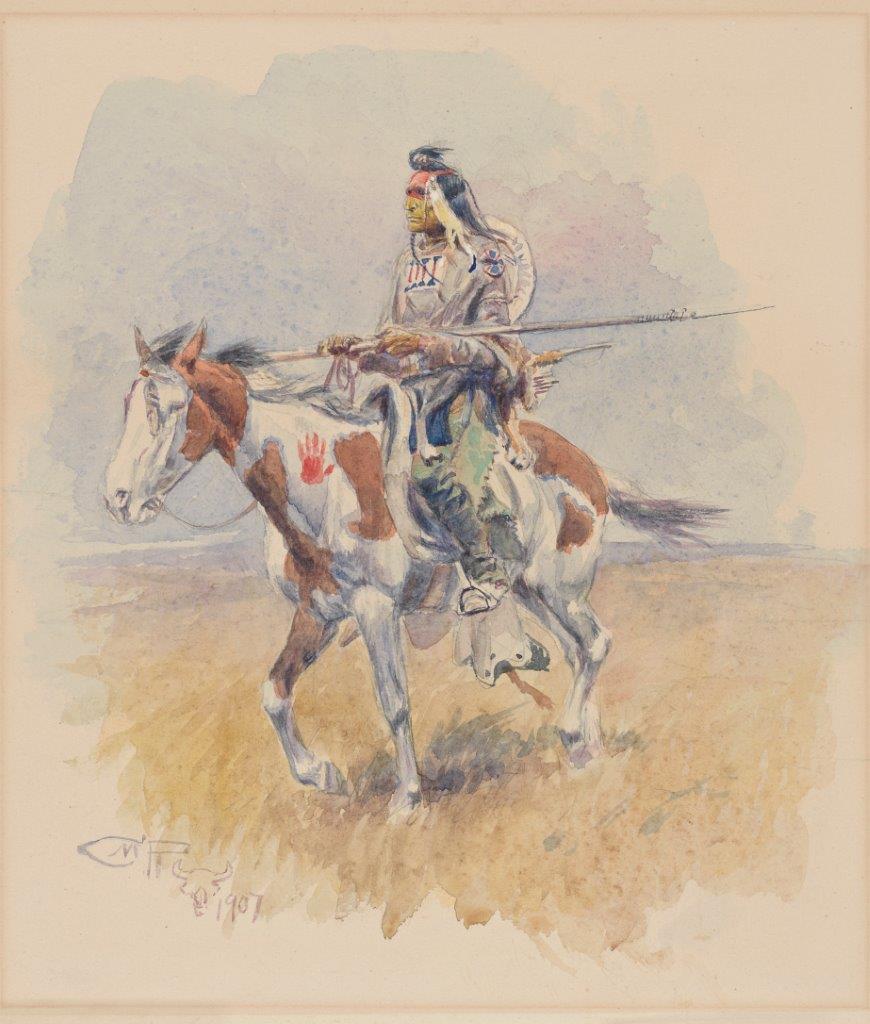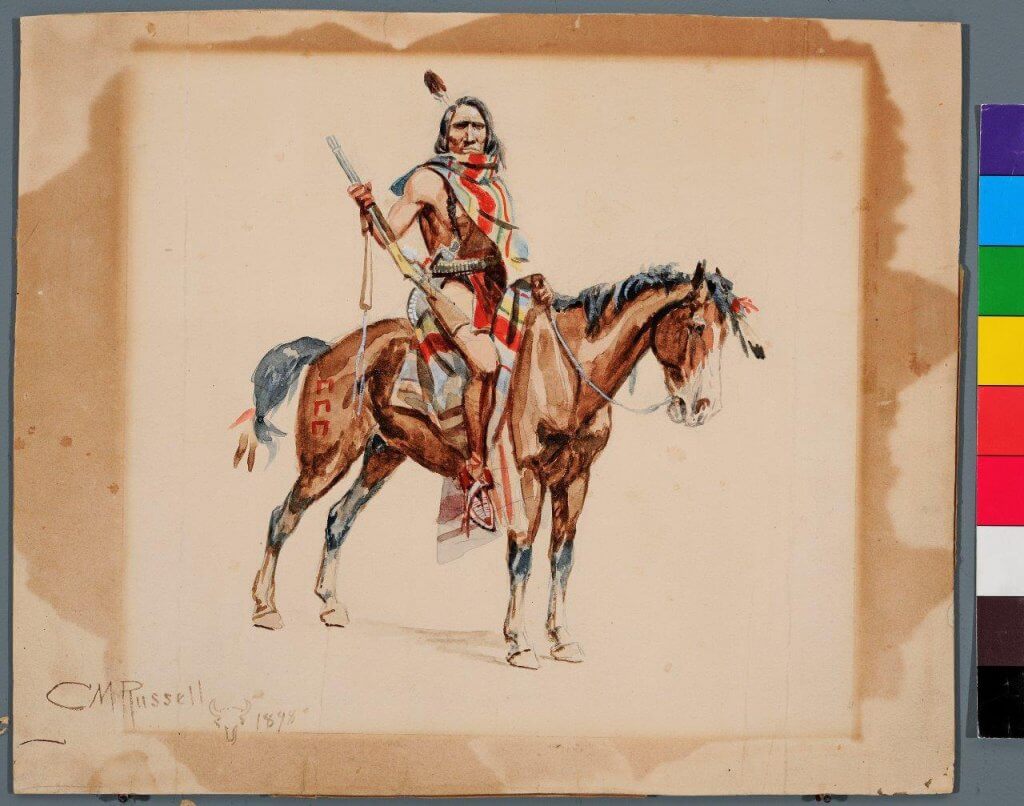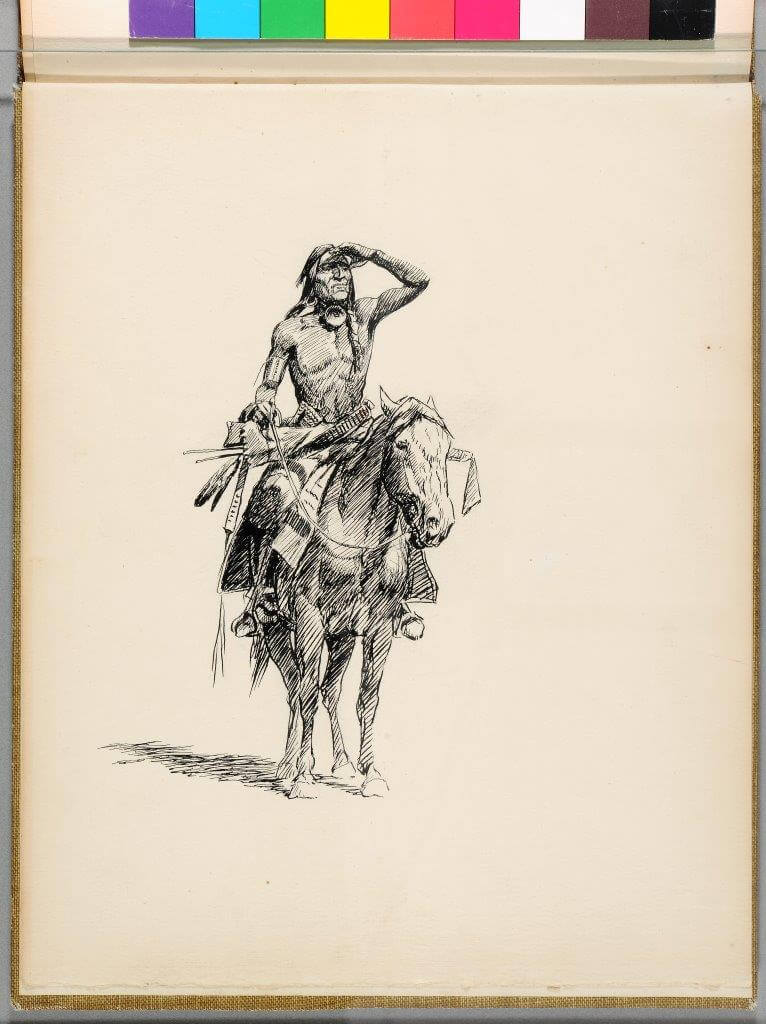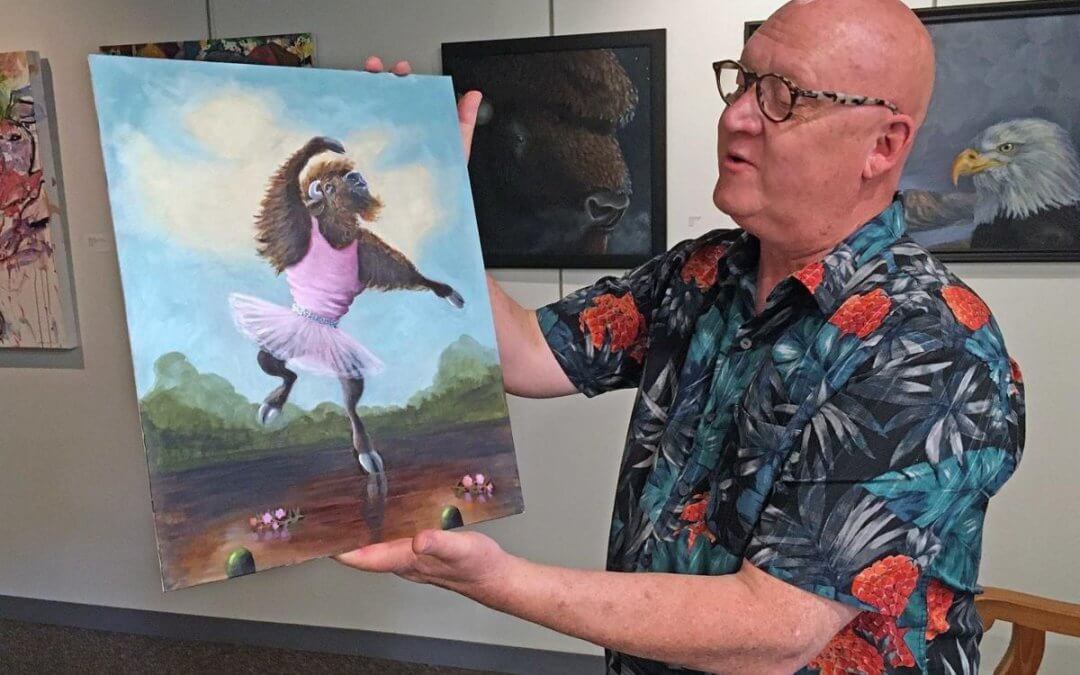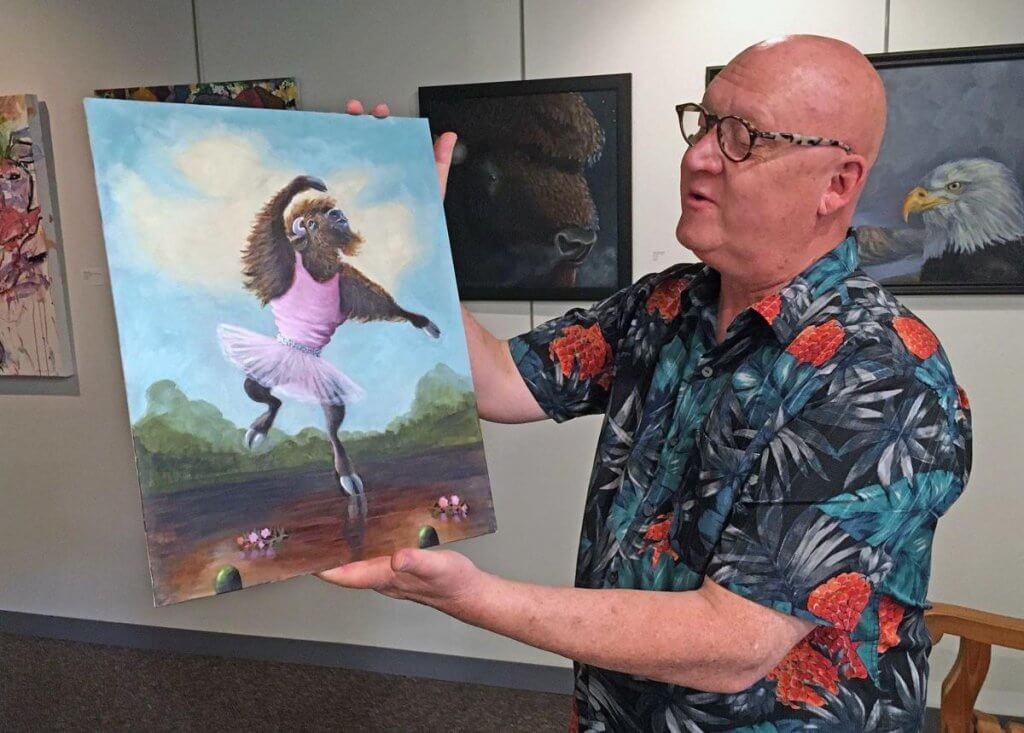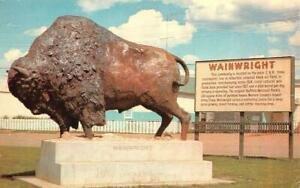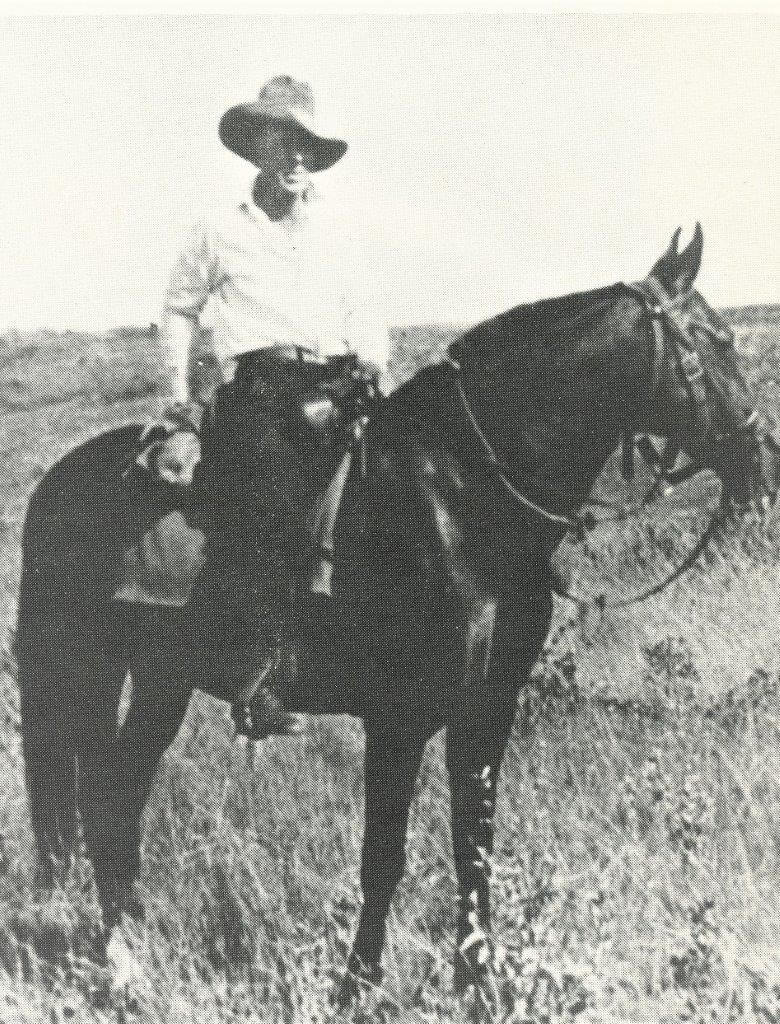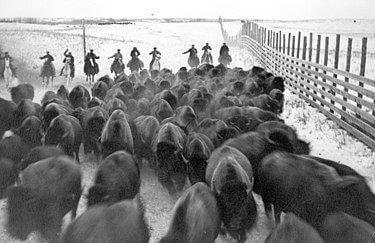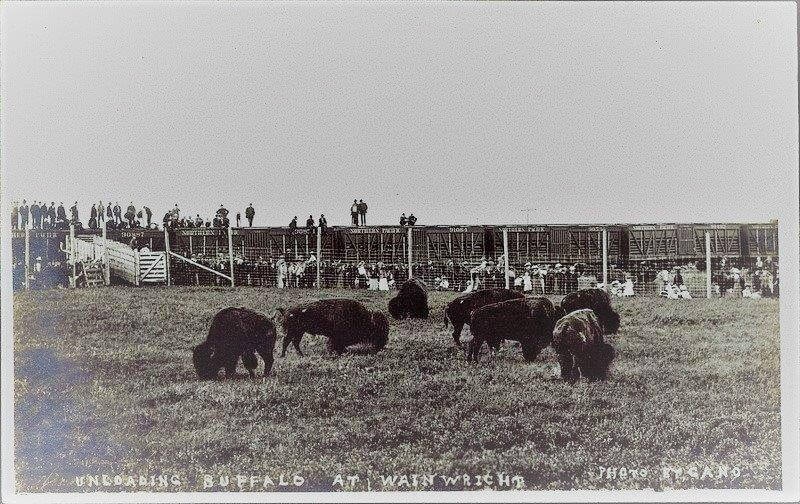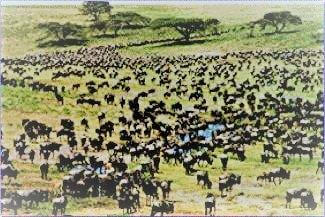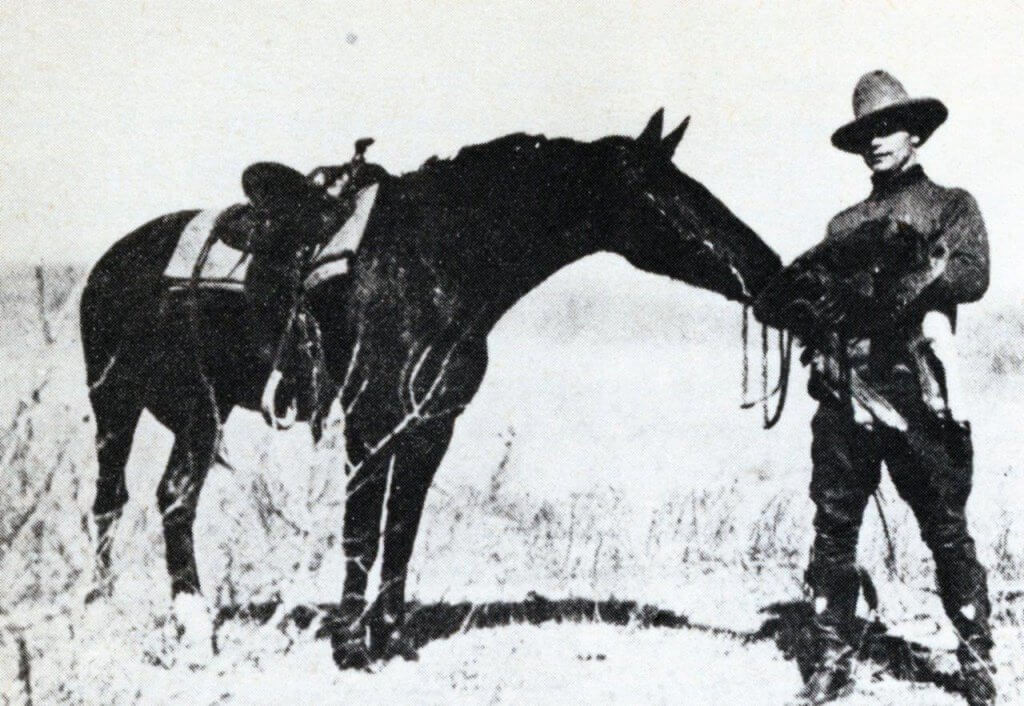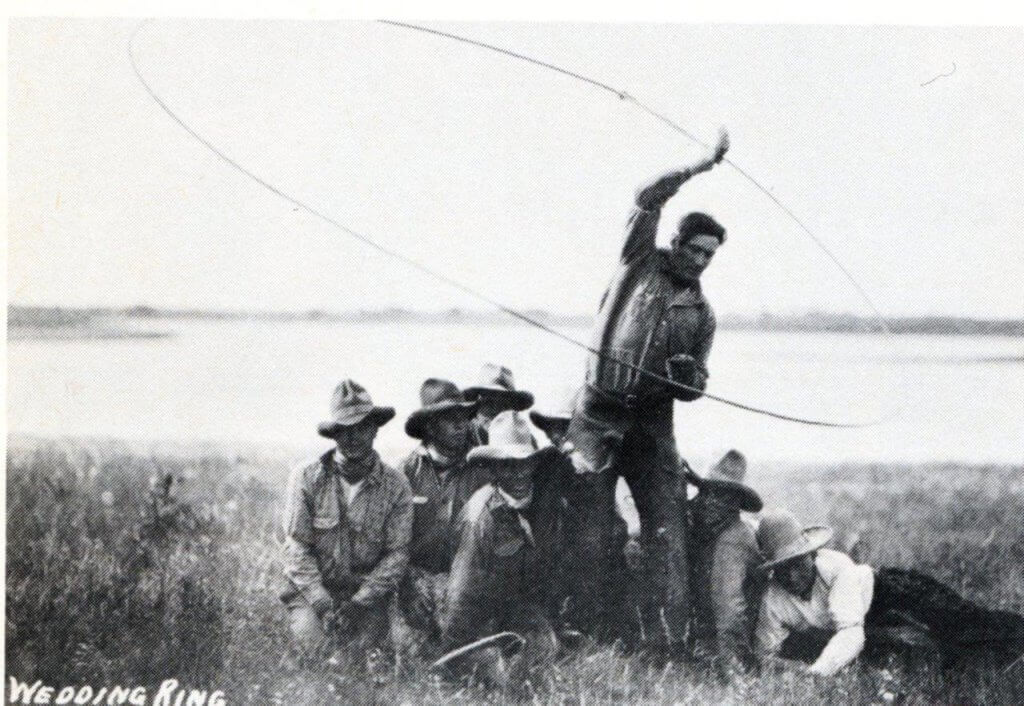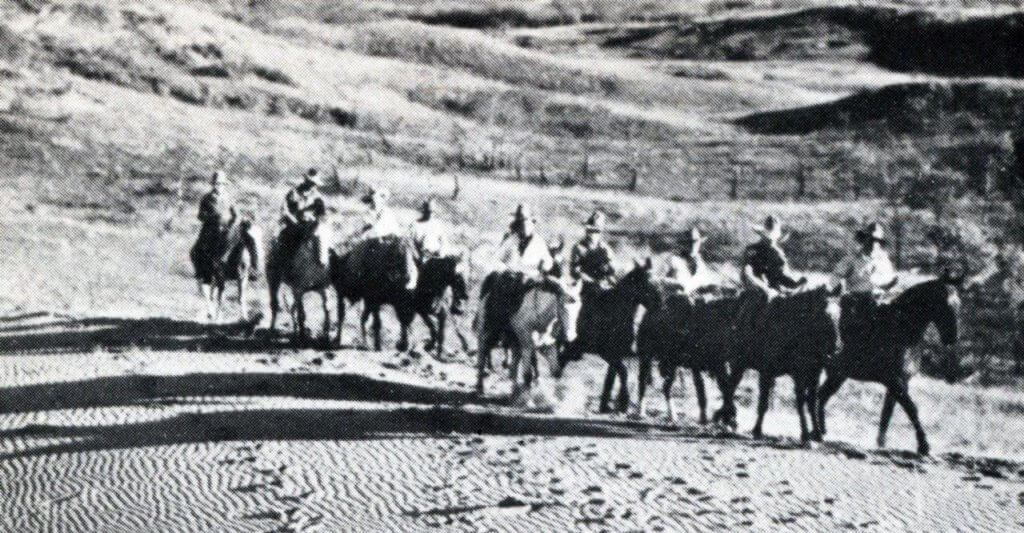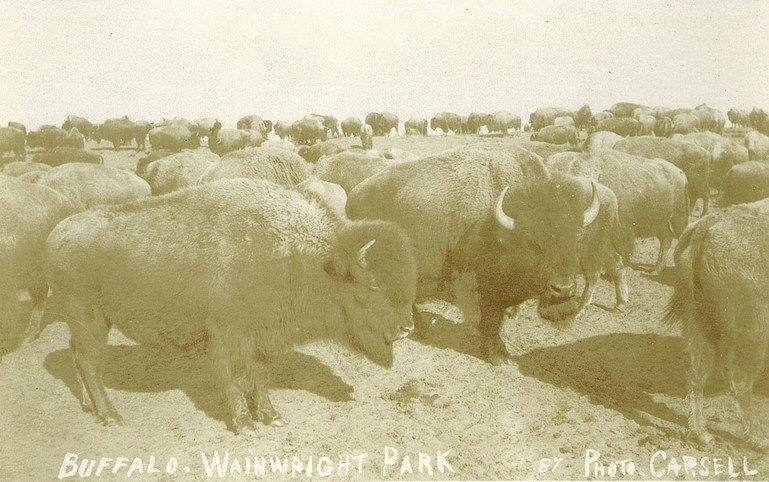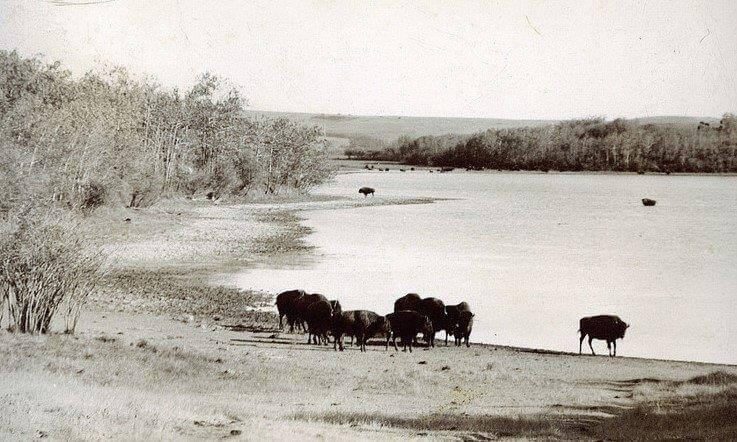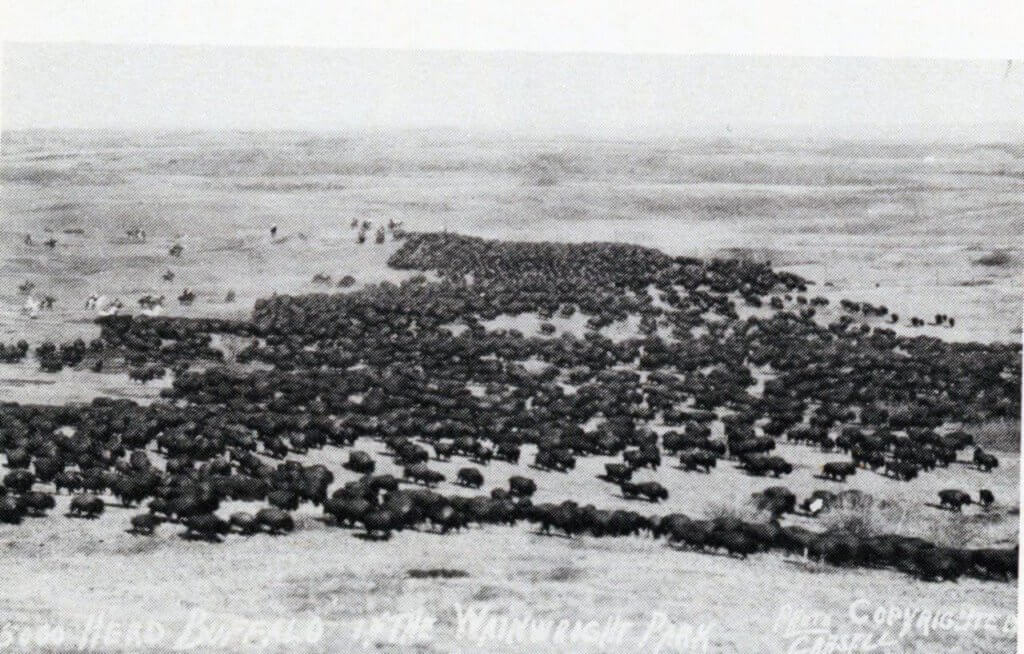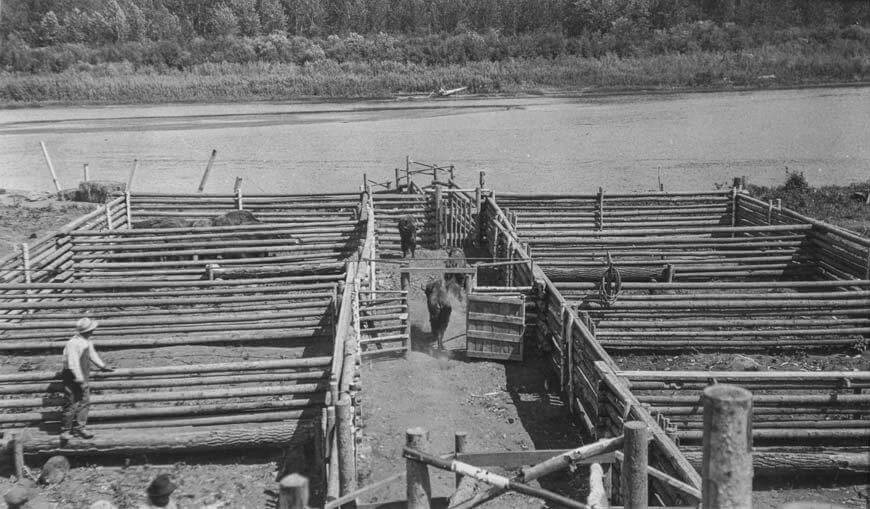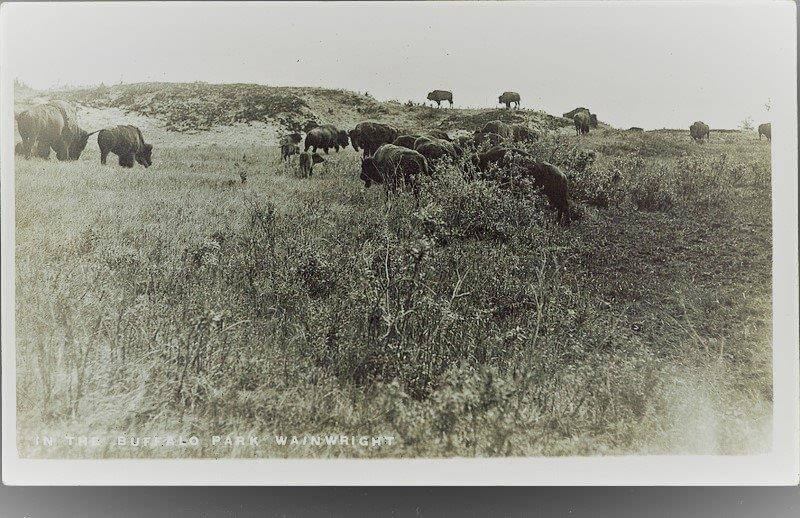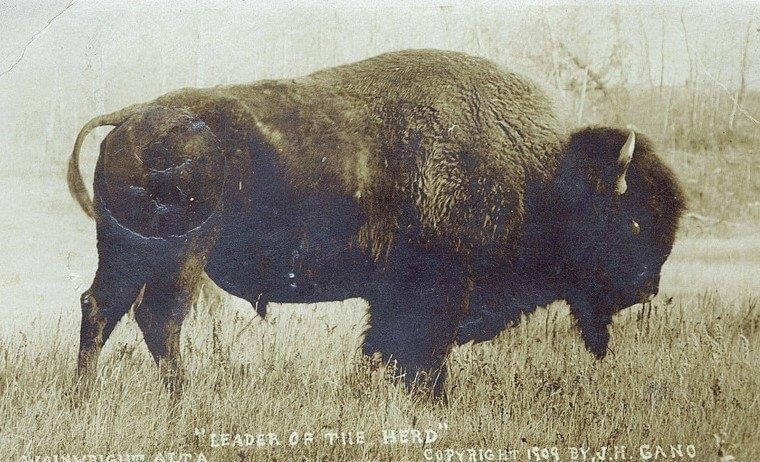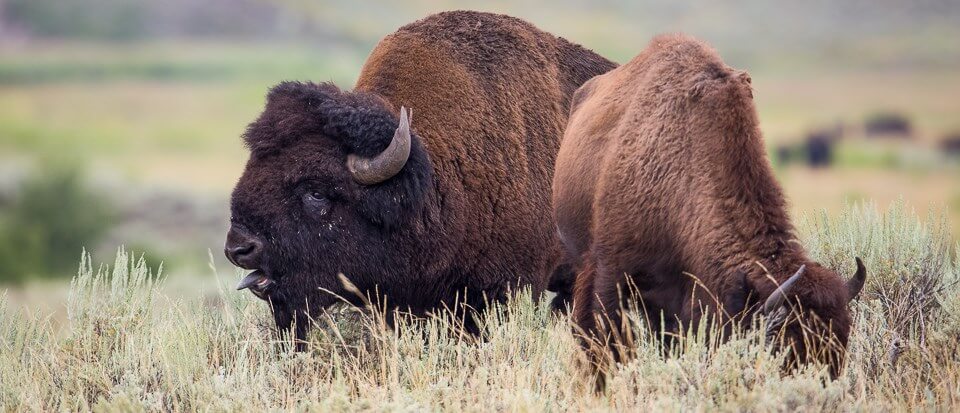
Bison Sounds and Vocalization
What sound does a bison make? Your answer may not come as quickly as “moo” for a cow or “baa” for a sheep. But . . .
Buffalo sounds include anything from the high-pitched bleats of a calf looking for its mother to the deep, low rumblings of male bellows heard during mating season. Other common bison sounds consist of grunts, snorts, coughs and growls.
Calves produce a variety of sounds such as high-pitched grunts and bleats. These vocalizations are commonly associated with searching for their mothers or playing with other calves.
As calves grow older, they will not stay entirely close to their mothers. When they have traveled too far, the mom will utter a series of low-pitched grunts. The calf responds with higher-pitched tones.
So next time you find yourself in a national park or wildlife refuge, tune in to listening for the classic sounds of bison!
In honor of our National Mammal, enjoy this Yellowstone bison rut footage from the 2020 virtual roadshow.

Male bison “bellow” in order to announce their presence and establish dominance in a herd. During the mating season or “rut,” bellowing becomes more prevalent, creating a signature sound of midsummer in Yellowstone. NPS
At the end of spring, females are mainly in small groups tending to young calves. Bachelor groups and lone males spread across the plains, not too far off, but in the same locality.
By July, big groups of bison begin coming together in large open areas for the mating season, known as rut.
Bulls display their dominance by grunting, wallowing and fighting. A challenging bull might grunt, snort, blow or growl to get a female’s attention and the defending bull roars back in an impressive bellow that is described as closely resembling the roar of a lion.
These bellows have been compared to revving up an old Chevy truck!
Bellows of a buffalo bull in rut have been compared to revving up an old Chevy truck!
It is believed that the bellows announce the male’s presence and establish dominance within the herd. The frequency and power of sounds increase during male-to-male competitions or when they are trying to find mates.
“I have been assured by old plainsmen that under favorable atmospheric conditions such sounds have been heard five miles,” wrote Wm. Hornaday.
During the mating season or “rut,” bellowing becomes more prevalent and big herds come together, creating a signature sound of midsummer in Yellowstone Park and Custer State Park in the Black Hills.
The bison rut takes place in July and August. After a bull has proven through face-offs that he is strongest, he focuses on females. In late summer male bison along the Mary Mountain Trail and elsewhere in Yellowstone Park bellow to display their dominance over other bulls.
During rut, the quiet plains fill with male bison bellows, low sounds that travel far for females and potential competitors to hear and respond. Pillars of dust rise into the air as the bison wallow, rolling in the dirt.
Males sometimes urinate on the ground before wallowing, covering themselves with their pheromones—a special odor. When a bull bison rolls on the ground, he’s also urinating, spreading his scent. His urine tells a story to others.
Both male and female bison wallow throughout the year to deter flies and shed fur, but there is a notable increase during rut.
The ritual of the rut helps ensure the survival of the fittest, earning a bull the chance to gain a female’s acceptance as mate.
The dominant bulls join and remain with a mixed cow-calf group, tending to females and warding off competitors.
A bull must continuously defend his females from opportunistic males. He selects a female and “tends” her—stays close—for two or three days until she’s ready to breed, defending her against other males. If she has a calf, it is unceremoniously bumped out of the way.
After breeding, dominant bulls select another cow and again stay close while fighting off other bulls.
This activity is extremely strenuous for the major bulls—and during the two or three months of rut they lose weight–as much as 200 pounds, or 10% of body weight.
George Catlin, artist and observer on the upper Missouri during the 1830s, once reported seeing several thousand buffalo in rut raising huge clouds of dust. They pawed the earth, “in mass, eddying and wheeling about… plunging and butting at each other in the most furious manner.
“All [roaring]] in deep and hollow sounds; which mingled together like the sound of distant thunder at the distance of a mile or two,” wrote Catlin.
“The actual combats, which were always of short duration and over in a few seconds after the collision took place, were preceded by the usual threatening demonstrations, in which the bull lowers his head until his nose almost touches the ground, roars like a foghorn until the earth seems to fairly tremble with the vibration, glares madly upon his adversary with half-white eyeballs and with his forefeet paws up the dry earth and throws it upward in a great cloud of dust high above his back.”
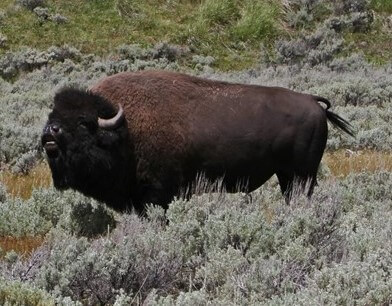
Bison use all their senses of smell, hearing and sight. In rut they sniff the air and their bellows can be heard for miles. Photo courtesy of National Park Service.
“Near the mouth of White River, we met the most immense herd crossing the Missouri River— and from an imprudence got our boat into imminent danger amongst them—from which we were highly delighted to make our escape.
“It was in the midst of the ‘running season,’ and we had heard the ‘roaring’ (as it is called) of the herd when we were several miles from them.
“When we came in sight, we were actually terrified at the immense numbers that were streaming down the green hills on one side of the river and galloping up and over the bluffs on the other.
“The river was filled, and in parts blackened, with their heads and horns, as they were swimming about, following up their objects, and making desperate battle whilst they were swimming,” he wrote.
Research at the U of California-Davis School of Veterinary Medicine shows that heavier bison bulls produce lower (deeper) formants and this predicted higher mating success, even when controlling for mass.
Their study was conducted during July and August of 2004-2007 at the Fort Niobrara National Wildlife Refuge, in the Sandhills region of north-central Nebraska.
Field recordings and behavior observations were made on a herd of 325 individually identifiable (branded) bison. Herd-wide observations were conducted continuously during daylight hours throughout the reproductive season and included measures of active participation in rut (tending male-female pairs and attending rival bulls), copulations and the outcomes of agonistic interactions between bulls.
Observations were conducted from 4-wheel-drive vehicles to which the bison were accustomed.
Tending bulls were recorded during sessions in which a single tending pair was followed and recorded for 20-30 min.
Tending pairs consisted of a male guarding a female by standing close and using agonistic (aggressive) displays and physical fighting in an effort to prevent the approach of other males.
Bison were monitored throughout the reproductive season to acquire data on dominance levels and copulations. Biological tissue samples were used to assign parentage to sired offspring.
Body mass of recorded bulls was measured in late September (after the peak of the rut) during the annual autumn roundup conducted by staff for herd management purposes.
Bison were weighed in a hydraulic squeeze chute containing a built-in scale. Exact ages were available for all bison included in this study through unique brands and records.
Dominance scores for each bull were based on the outcomes of aggressive interactions between bulls during rut.
Agonistic interactions were recorded when two bulls approached each other to within five body lengths and one bull turned away in a different direction by at least two steps. The first bull to turn away was recorded as the subordinate—or unsuccessful—bull in that interaction.
Agonistic interactions included a variety of behaviors ranging from bellowing, visual displays and parallel walking to pawing, wallowing, charging and physical fighting.
Dominance scores for each bull were calculated as the number of successful interactions divided by the total number of agonistic interactions viewed per bull during the reproductive season.
The study concluded that bulls bellowing with lower formants (from longer vocal tracts) reflect their greater fitness.
This sent positive information to the bison herd of dominance, mating success and reproductive success—the siring of more offspring—across long distances.
These signals were judged to contain information for the herd about the bull’s competitive ability, quality, condition, motivation and sexual receptivity.
The vocalizations may reveal information about the male’s competitive ability, physiological quality and condition, and sexual receptivity—in other words, the bellows denote fitness-related information important to the herd.
They indicated that the acoustic qualities such as the frequency, length and volume of the bellows demonstrate which males are more dominant, and therefore, a better mate for females.
Scent of a Bison
If someone comes near you, can you tell who it is just by their smell? The North American Bison can. Their sense of smell is so good that they can tell the difference between smells from over a mile away!
This sense of smell comes in really handy when they are trying to figure out if predators are nearby. With their amazing sense of smell bison can take one whiff and make a clean getaway.
Bison use all their senses—smell, hearing and sight. The sense of smell is especially well developed, and bison reaction to the odor of an observer is often more marked than reaction to sight or sound.
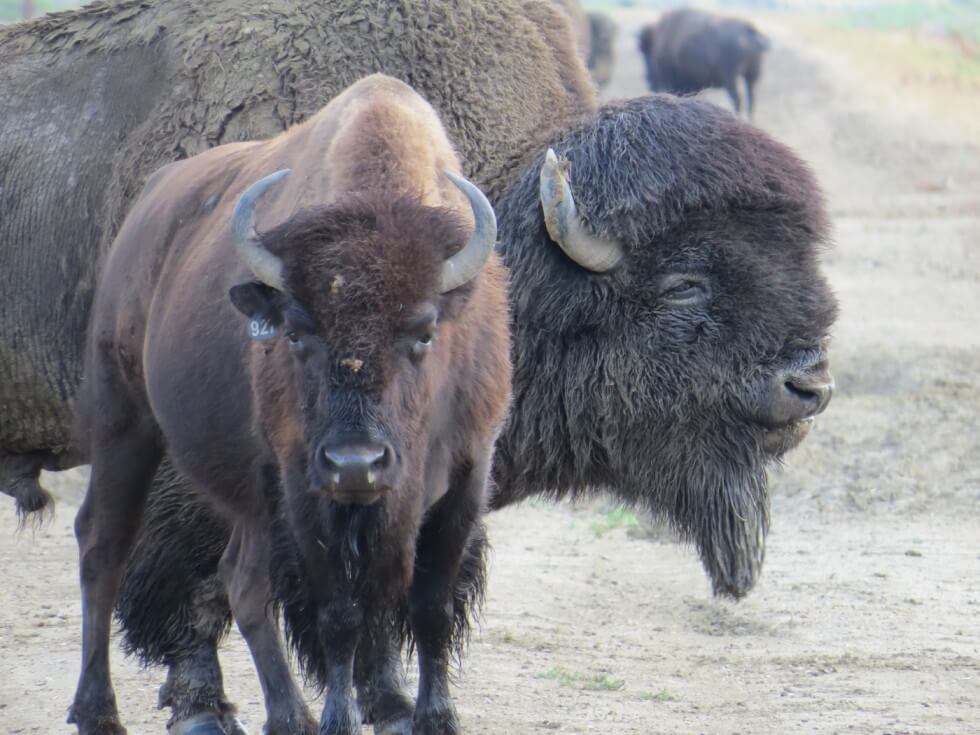
In rut the bison bull is using all his senses—smell, hearing and sight
Both smell and hearing are acute. They can pick up strange odors on a stray breeze as well as weak and distant sounds.
They are able to detect another animal by smell at a distance of 3 kilometers (1.5 miles).
Ancient hunters understood they had to hide their human scent or cover it over with buffalo odors.
The most important communication is with pheromones and smells, related to reproduction.
Through their senses of touch, smell, hearing, and vision, the members of a herd weave into one another. A cow identifies her calves in the first days mainly by smell; then she recognizes it visually, and finally by its calls. Grunts and bellows resound and carry manifold meanings for members of the herd.
A bull smells the urine and rear end of females, which can tell him whether she is in heat or not.
Bison Eyes View 90 Percent of Surroundings
Often it has been said that buffalo have poor eyesight. But perhaps it’s not so much that their eyes are weak—as that they are unlike the eyes of predators.
Eyes are positioned on opposite sides of the buffalo’s head. This makes it difficult for them to see and focus ahead without turning. Many have concluded that buffalo have poor eyesight.
However, Steven Rinella, who studied all aspects of buffalo alertness in preparation for his lonely Alaskan buffalo hunt, after his tag was drawn in lottery, says their eye location allows for panoramic vision.
Rinella points out that buffalo—like other targets of predators, such as bison, deer and cattle—have eyes on opposite sides of the head. This gives them a wide panoramic vision—rather than the sharply focused vision of predators.
In searching for his wild Alaskan Buffalo, Steve Rinella says he had to worry about both sight and sound—what the buffalo see and what they hear.
“Sight is most important. While an animal might not immediately run off when it sees me, it certainly will not forget that I’m here. Usually an animal will spot me by detecting the movement of my body,” he writes in American Buffalo: In Search of a Lost Icon, 2009.
“If you look at a large herbivore [plant eater] such as a buffalo, you’ll see that its eyes are laterally positioned or placed on opposite sides of the head. This type of eye placement allows for panoramic vision.
“A buffalo can see almost 90 percent of its surroundings without turning its head (obscured, however by wisps of hair).
“Lateral positioning is superb for the detection of predators that are lurking to the sides and rear of an animal, though it does leave the animal with a compromised ability to see visual detail.
“Predators—owls, humans and lions—have eyes that are frontally positioned, allowing for narrower, more binocular vision. (Humans see a little less than half of their surroundings at any given moment.)
“Frontal positioning is superb for depth perception, which enables predators to calculate the proper timing and trajectory for effective strikes and to concentrate on a specific target. This is essential because a 150-pound mountain lion needs to have a very precise strike if it’s going to take down a 300-pound yearling elk.
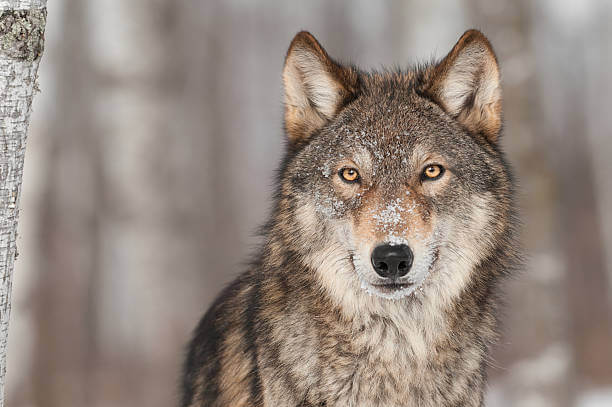
The eyes of predators—like wolves and owls—are positioned in front of the head for sharp focusing and precise strikes on their prey.
Rinella also says that humans see a much more colorful world in the daytime, but more darkness at night than do buffalo.
The retina of the eye has two types of photo receptors—rods and cones, he points out. Rods are more sensitive than cones—and they are much better in low-light—but they don’t detect colors.
So maybe because both buffalo and their predators are active at night, they have more rods and fewer cones.
Human eyes have a density of cones in the center and more rods at the edges, he says. So try looking out of the corner of your eye when trying to see in the dark. “You’ll see it more clearly.”
Bison are typically alert and wary of an observer whether seen or heard, but a careful approach to a viewpoint is often possible if the wind has not carried the scent to them. After an observer is scented, flight is usually immediate. The herd runs for at least a short distance.
Sight more frequently causes flight than does sound, according to one expert, and an observer sighted on foot is more disturbing than one on horseback. In winter a skier is usually detected as soon as in view of a herd, although the skier may be a mile or more away. However, if the skier uses white clothing, approach to less than 100 yards is sometimes possible unless scent disturbs the bison.
The tail is a highly expressive organ, and through vision bison can participate in the ebbs and flows of dispositions and moods that show themselves through the tail, as well as through movements of the body and head.
The Wholeness of Senses
Craig Holdrege in his book “Seeing the Animal Whole—And why it Matters,” notes that all of the buffalo senses are part of a whole, coming together in one animal.
“We realize that the various grunts and bellows have meanings in the relations among the members of the herd,” he writes. “All such activity radiates out from the bison as a centered, attentive being. Sentience is an expanding and contracting agency by which the animal opens through its senses to participate in a specific world of qualities.
“The bison expands into a wide world through senses such as hearing, sight and smell and draws more into itself when tasting, ruminating and digesting.
“Every movement the animal makes embodies sentience, whether flicking of flies with its tail or swimming across a river. Every part of its body is ensouled, but the sentience itself—the soul of the animal—is not, just as the animal’s life is not, a ‘thing’ that can be localized.
“One exception to the usual wariness of bison is common,’ he writes.
“Solitary bulls are probably as aware of an observer in a given set of circumstances as is a group of bison. However, these bulls are much more inclined to stand their ground, particularly near roads, where they are more accustomed to people.
“Their tolerance of approach is misleading; they are not aggressive, but when approach is beyond tolerance, they will depart. The line of departure may be through or over unwary people who sometimes nearly surround one of these bulls.”
This can be dangerous for visitors who have come too close, typically for photos.
[Note: We are unable to find a sound recording of a Buffalo Calf calling its Mother—or the Mother’s call and response. If anyone will send us a video of these sounds, we’d love to add it to this educational Blog on “Bison Sounds, Smells and Eyesight.”]
—
NEXT:
_____

Francie M Berg
Author of the Buffalo Tales &Trails blog



